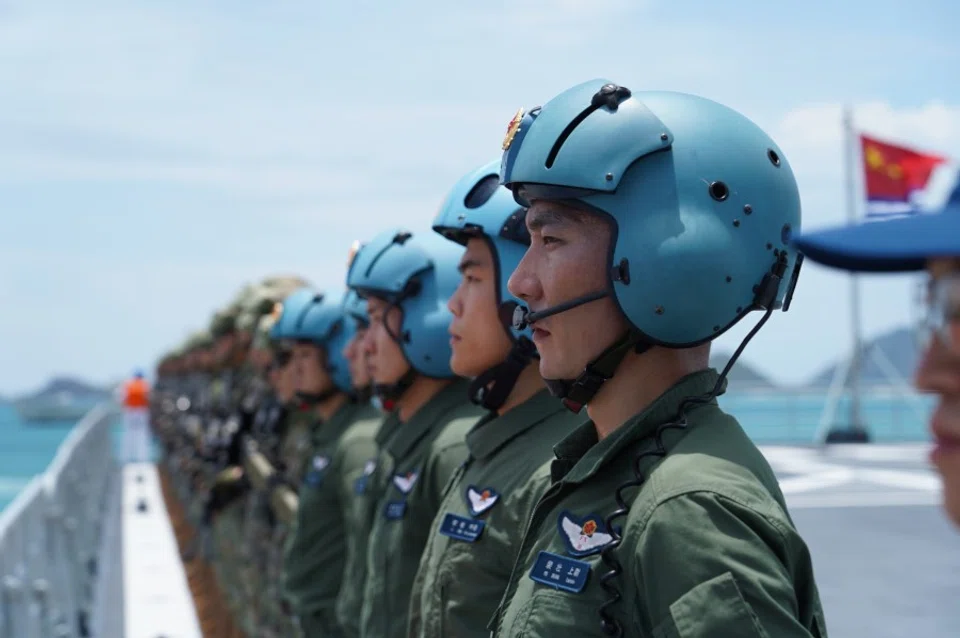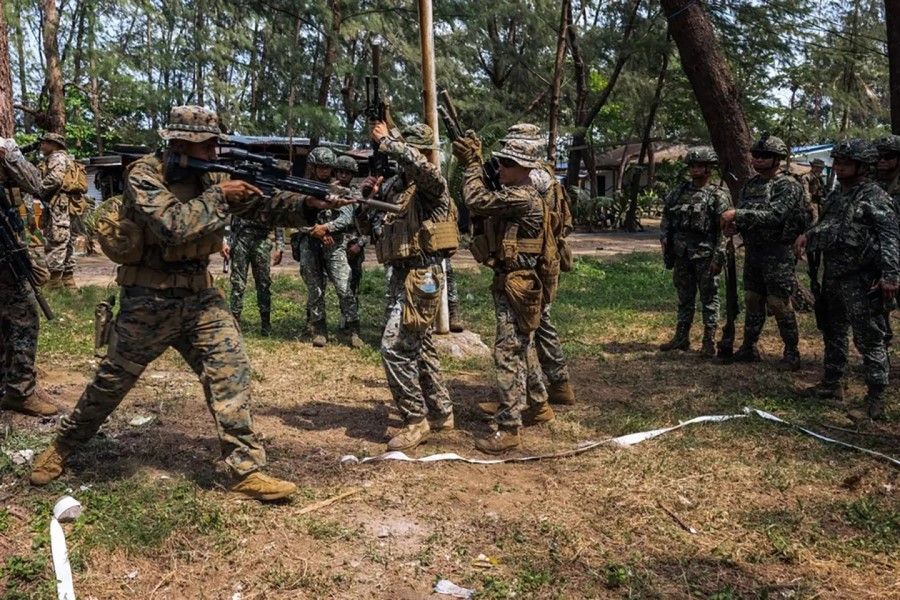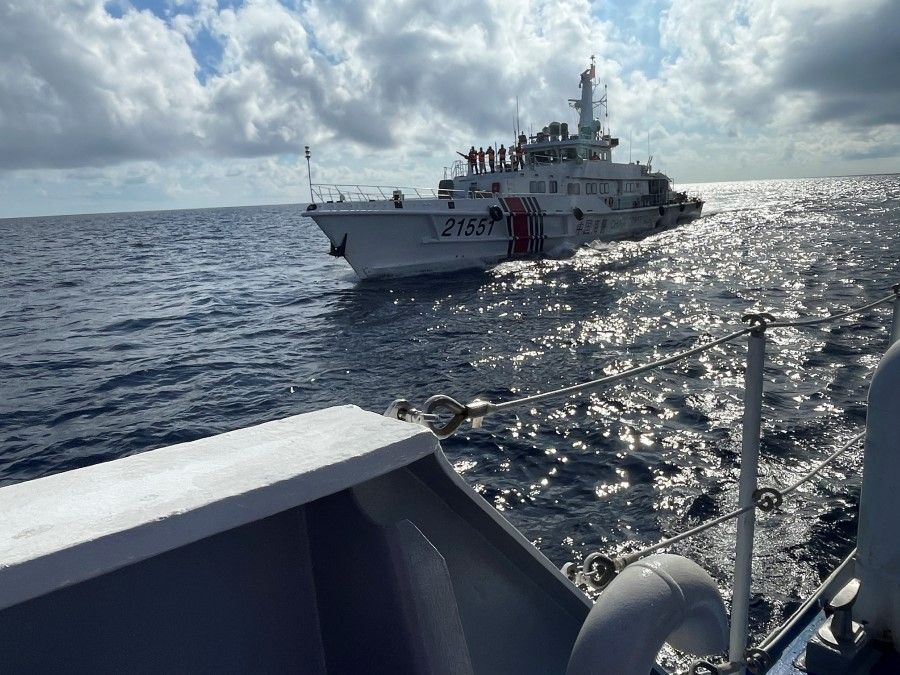Do China's military exercises in Southeast Asia belie a lack of trust?

It has been an exceptionally busy year for China's People's Liberation Army (PLA) in Southeast Asia. In the first nine months of 2023, the PLA held 11 military engagements in the region: the highest number ever and more than in any other part of the world this year. But the increased activity belies a lack of trust between China and its smaller neighbours in the region.
Part of the reason for the sharp uptick in China's defence diplomacy activities in Southeast Asia is that it is making up for time lost during the 2020-2022 Covid-19 pandemic, when PLA troops could not deploy overseas.
An alternative provider of regional security goods?
But the main reason is that Beijing increasingly views defence engagements with regional states as a means of promoting a China-led security order, one that displaces and eventually excludes the United States. Stripped to its bare bones, that is clearly the goal of President Xi Jinping's Global Security Initiative.
By conducting military exercises with Southeast Asian countries, China is attempting to show that it can be an alternative provider of regional security goods to the United States.
To that end, since the end of its 'Zero Covid' policy in December last year, China has quickly ramped up its defence cooperation with Southeast Asian countries (see Table 1).
Chinese military exercises on the up
But while the increased tempo of China's defence engagements with Southeast Asia looks impressive, they should be viewed in perspective. In terms of size, frequency and scope, they cannot compare with America's joint exercises in the region.
America's joint exercises: In a different class
China's drills with Southeast Asian militaries are still mainly bilateral and generally involve just a few hundred military personnel from each side.
In contrast, America's exercises with its regional partners are usually much larger and often involve more than just two countries.
For example, this year's Cobra Gold exercise involved 7,000 troops from seven countries. In August, the annual US-led maritime security exercise SEACAT, in Singapore, was attended by 300 naval and coast guard personnel from 20 countries. The US-Indonesia exercise Super Garuda Shield (currently underway in Indonesia) has been joined by Japan, Australia, Singapore, the United Kingdom and France, bringing total troop numbers to over 5,000.
But it is not just the size, frequency and composition of US exercises that is different from China's drills: it is also the level of sophistication.
In April, the annual US-Philippines exercise Balikatan involved 17,600 troops. The exercise was one - albeit the largest - of nearly 500 military engagements due to be held between the US military and the Armed Forces of the Philippines (AFP) this year.
China is, however, taking a leaf out of America's playbook and is moving towards holding multilateral exercises in Southeast Asia. Peace and Friendship 2023 is an exercise that will include military personnel from China, Cambodia, Laos, Malaysia, Thailand and Vietnam. It is currently planned for November.

But it is not just the size, frequency and composition of US exercises that is different from China's drills: it is also the level of sophistication.
China's exercises in the region are often performative events; they are more symbolic than substantive. They are often highly scripted, with schedules and outcomes planned out in advance. Such events do not approximate real-world operations.
Another crucial difference is that US exercises often prioritise improving the skill-sets of the partner nation's armed forces with a view to building capacity over time, deepening relationships and enhancing interoperability. The latter involves honing the ability of allies and partners to work together coherently and effectively, both in times of peace and war.
In contrast, China's exercises with regional states tend to focus on less sensitive or non-controversial areas of military cooperation such as humanitarian and disaster relief (HADR), search and rescue at sea and counter-terrorism.
So what explains the qualitative difference between Chinese and American exercises?
This is especially true of Southeast Asian countries that have contested territorial and jurisdictional claims with China in the South China Sea, particularly the Philippines and Vietnam...
A lack of trust?
Part of the answer lies in the fact that the US military has been conducting defence engagements with its regional counterparts for decades, during which it has built up habits of cooperation.
But the most important factor is strategic trust, a prerequisite for countries that train together on a regular basis using their most advanced equipment.
America has a number of close allies and partners in Southeast Asia, but with the possible exception of Thailand and Cambodia, China does not.
This is especially true of Southeast Asian countries that have contested territorial and jurisdictional claims with China in the South China Sea, particularly the Philippines and Vietnam, the principal Southeast Asian protagonists in the ongoing maritime drama. The existence of these contentious disputes precludes close defence ties with China.

In fact, the China Coast Guard's (CCG) recent aggressive actions against Philippine vessels at Second Thomas Shoal appear to have put the kibosh on any future security cooperation between the two countries.
Not only has the Philippine Coast Guard said it will discontinue its hotline to the CCG, but the AFP has stopped sending its personnel to military colleges in China. A proposal by China's ambassador that the two countries hold a joint exercise has gone down like a lead balloon with the AFP chief General Romeo Brawner.
There is little doubt that the PLA will hold more joint exercises with its Southeast Asian counterparts in the coming years.
But so long as China continues on its present course in the South China Sea, the trust deficit between it and many Southeast Asian countries will be a permanent bar to the more frequent, larger and advanced military drills the US already holds on a regular basis with the armed forces of regional states.
This article was first published in Fulcrum, ISEAS - Yusof Ishak Institute's blogsite.
Related: Will China's military exercises with SCO countries and Russia help it build a regional security order? | China's military leadership after the 20th Party Congress | Japanese academic: China needs to show more self-restraint in PLA's military activities | China-US relations: 'Strategic clarity' on Taiwan may lead to hot war
